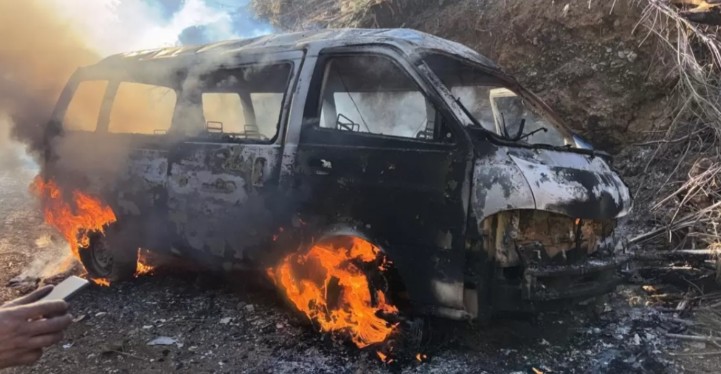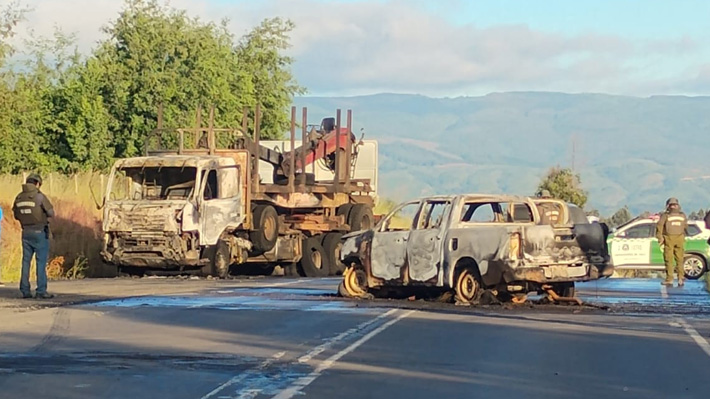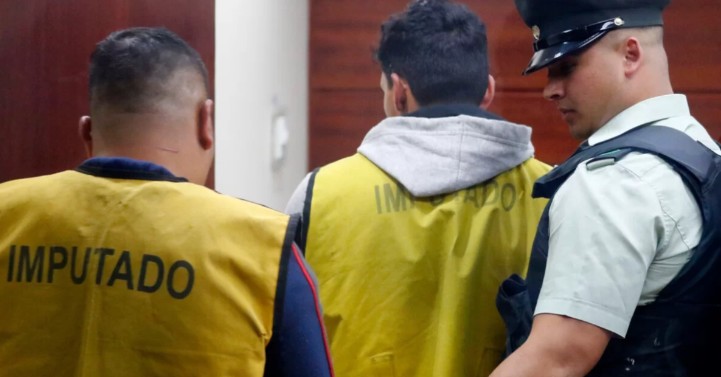Intentionality accounts for 56% of investigated fires during last season
The wildfires that ravaged the Biobío Region during the last season burned over 200,000 hectares, affecting the vast majority of the region's inhabitants. With the arrival of a new summer season—and the possibility of another forest catastrophe—it is crucial to monitor the efforts of the entities responsible for firefighting.
In this regard, the National Forestry Corporation (Conaf), experts in prevention and firefighting, confirmed they have been preparing and coordinating preparatory work for months.
In conversation with Diario Concepción, Rodrigo Jara, Conaf’s regional director for the Biobío Region, assesses preparations for the 23/24 season.
-Regarding the fires that affected the Biobío Region last season, how prepared is the region for the upcoming summer season?
Conaf’s various departments have been preparing through numerous prevention and coordination activities. Often, only the firefighting efforts are visible, not the extensive preventive work behind the scenes.
Conaf carries out this work year-round through different programs and tools, particularly in prevention. The most impactful initiative is on-the-ground work with neighborhood associations and communities under the "Prepared Communities" program.
This year alone, over 140 activities have been conducted in the region. The "Prepared Communities" program involves engaging rural communities, neighborhood associations in rural areas, and interface zones—residential areas adjacent to forested systems. These communities receive training on what to do before, during, and after fires, as well as how to prepare their surroundings to reduce fire risks and potential damage to homes and lives.
-Last year’s major issue was the proximity of homes to forests or even fire-prone wooded areas. Legislative measures were proposed to create safety buffers. Are there any advances in measures that could make a difference compared to last year?
Forestry companies are improving land and plantation management plans to build mitigation structures like vegetation-free zones and fuel breaks.
Progress is being made, with forestry companies actively working on this. However, broader legislative implementation is still needed. The Ministry of Agriculture, particularly the minister, has also been pushing for a fire prevention law to regulate these measures.
Establishing safe distances between forested ecosystems and homes, as well as protecting these areas to minimize fire impacts on housing, is crucial. But urgency is needed—a law must be enacted soon to enforce these standards, alongside territorial zoning regulations.
Intentionality
-Another factor was arson or intentional fires. Last year, 60% of fires were reportedly intentional, yet no culprits have been identified. Given this high percentage, how do you view the situation?
Investigations fall under police and prosecutor jurisdiction. While results have been scarce, many cases from last season are currently under investigation, so I hope accountability will emerge soon.
Notably, during the 22/23 season, the region saw around 1,900 fires. We investigated the causes of about 450, of which 56.1% were intentional.
All data from our reports is shared with police and prosecutors. We provide all available information, and our specialists sometimes collaborate directly with investigators.
As an institution, we’re committed to supporting accountability efforts. Our reports focus on identifying fire origins—not assigning blame—to guide prevention campaigns.
-Of those 450 fires with determined causes, while 56% were intentional, the rest likely stemmed from negligence—carelessly discarded cigarettes or glass magnifying sunlight. What other causes were identified?
I won’t delve into details due to ongoing investigations, but beyond the 56.1% intentional fires, many resulted from regional residents’ negligence. This data helps tailor prevention efforts.
If fires stem from carelessness, prevention must focus on raising awareness in affected areas—highlighting fires’ tragic consequences for ecosystems, homes, and lives.
-For the upcoming summer, based on Conaf’s projections and current climate trends, what are the expectations?
Compared to last year, rainfall has increased and may continue until late October or mid-November—unlike last year’s drought. This should leave vegetation slightly more humid at summer’s start.
Quarterly reports predict below-normal rainfall by January/February, with dry conditions and temperatures 0.5–1.5°C above average. Despite current rains, expect a challenging, dry, and hot summer, possibly extending into March.
Thus, prevention efforts must remain active. Conaf has intensified prevention and begun early recruitment of firefighters.
-So…
We aim to complete firefighter recruitment by late November or early December. Resources secured from the regional government will enhance equipment and tools, partly available this season and fully by next. Weekly coordination with Senapred, Carabineros, firefighters, the military, and private companies ensures an 80% readiness rate to minimize fire impacts.
Night Brigades
-A notable change this year is Conaf’s night brigades. What can you share about this new approach?
Historically, brigades worked staggered daytime shifts, covering fires until ~3 AM. This season, four dedicated night brigades will operate through dawn.
These brigades require unique training and rest schedules, marking a new strategy for regional firefighting.
-Given nighttime’s added hazards, is there specialized training for these brigades?
Yes, night brigades follow different protocols, including rest periods and safety measures—a new operational model for the region.
-Compared to past years, how has coordination with municipalities progressed, and when does it begin?
Coordination is year-round, not seasonal. We’ve long collaborated with provincial offices and mayors across Arauco, Biobío, and Concepción.
Recent meetings with municipal associations—like Biobío Centro’s mayors—aim to address past gaps and strengthen prevention.
-Is private-sector coordination equally advanced?
Weekly meetings with Corma and other companies ensure alignment. Last week, we discussed regional and local strategies, maintaining constant coordination for fire scenarios.
Source:www.diarioconcepcion.cl

















